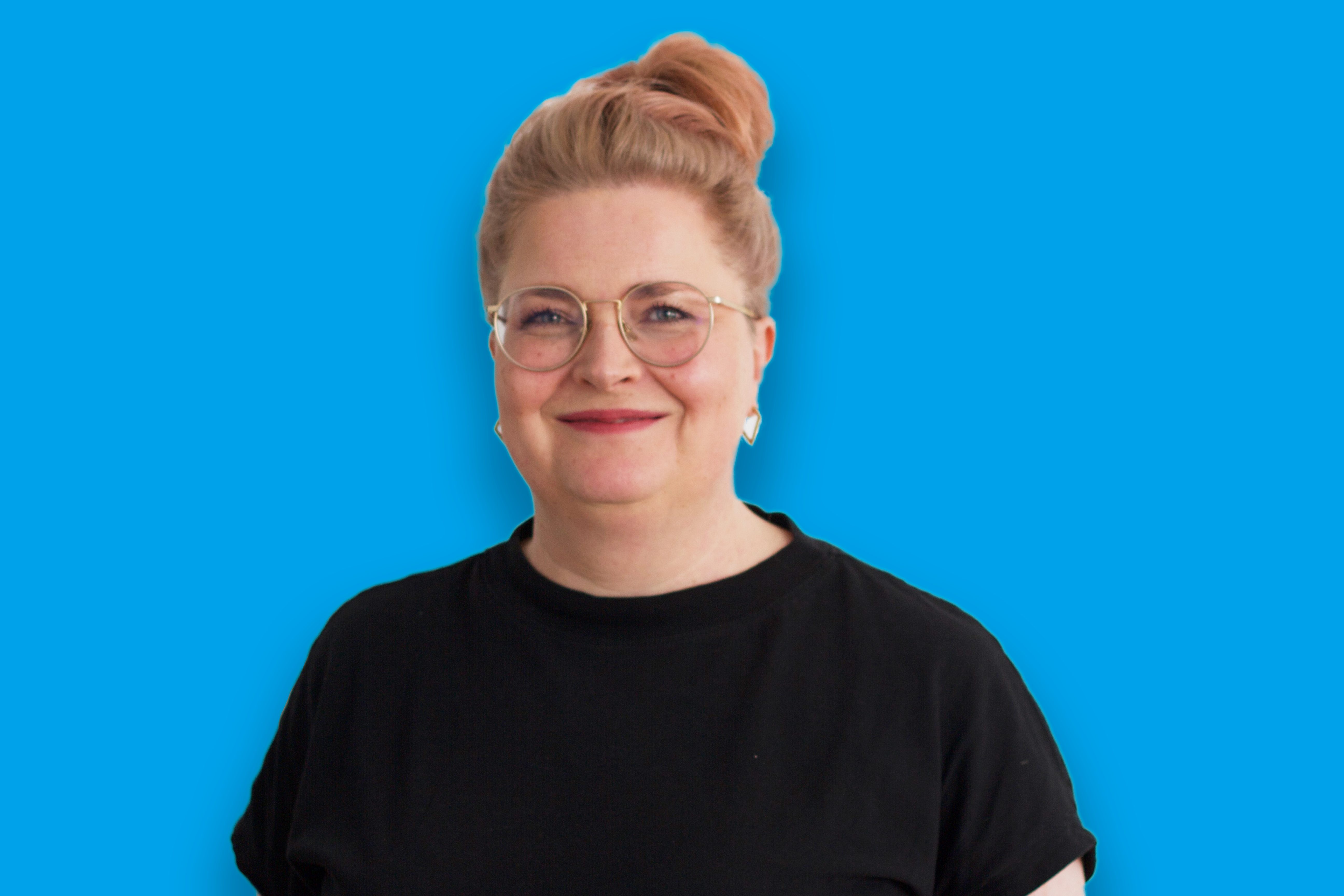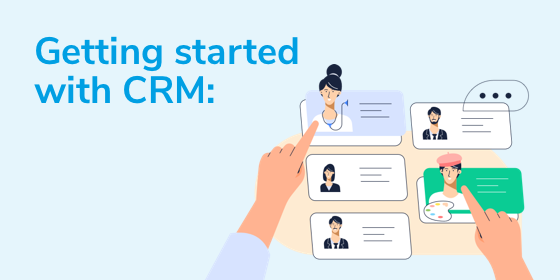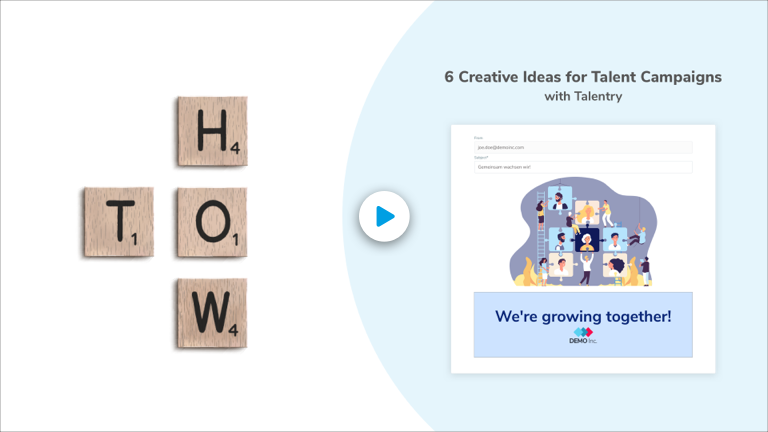Best Practice Interview: How Personio is supporting company growth with CRM

Contents
1. Why Candidate Relationship Management?
3. How to you keep in touch with talent leads?
4. What about target group specific approaches?
5. What are your specific goals?
6. What is your impression of Talentry onboarding?
7. How do Talentry CRM and Personio ATS work together?
In conversation with Julia Beuthien from Personio GmbH

Julia, you have decided to integrate candidate relationship management into your recruitment strategy. What was the decisive factor in this decision?
“We meet a lot of really talented people every day. After the interview process, we frequently say someone was a good candidate but the timing was not right, or one particular detail was missing to make them a perfect fit for the job. For us, it feels wrong to return this potential talent to the job market without keeping in touch or supporting the person’s career development, in order to perhaps make them a job offer at a later stage. Added to this, Personio is currently growing very fast and we sometimes need to recruit a lot of ad hoc talent. That’s why, in the long run, we wish to build a talent pipeline that allows us to strategically plan for filling vacancies at short notice too. This is only possible with good candidate relationship management.”
What was important for you in choosing a CRM system? And why did you ultimately choose Talentry?
“Three areas were particularly important for us: one was reporting, i.e. the possibility to collect data and check whether we are reaching our recruitment goals with the talent pool measures in the medium and long term. The second was the option of structuring pools individually. By this I mean, for example, being able to invite talent leads in different pools using different forms. A decisive factor was also the communication options with candidates, such as launching campaigns from the software tool. In addition to these ‘must haves’, we also liked Talentry because it can be customized. We were able to consider in advance how we wanted to set up our processes and what criteria were important for this, and then let Talentry know about our wishes. The system is flexible and agile and you can tweak it at any time. This makes things easier and more efficient."
Which measures and channels do you use to keep in touch with talent leads in your candidate pool?
“In implementing Talentry, we are focussing on developing the talent pool as a type of relationship-building and talent programme. Participants in the programme have the opportunity to get to know Personio – for example, at events offered exclusively for this talent programme; and also through presentations or workshops on skills relevant to Personio, advice sessions or smaller networking events at which talent leads can get to know each other. To accompany this, we offer information that is important to particular candidates in the form of newsletters or as part of targeted campaigns: take for example young talent leads who are about to graduate and mainly interested in our career opportunities. The range is really wide and, in the course of the year, we want to offer a number of different touchpoints – from the newsletter to one-day events for members."
Are you focussing on particular target groups during implementation and how are you tackling this?
"Although the system allows you to implement many ideas, initially we are focussing on a general talent pool that lets us take up contact with candidates as easily as possible. To begin with, seniority and professional background play a secondary role. For us it’s more about showing what Personio is currently up to in a newsletter. Parallel to this, we are developing a high-potential pool that will be a pipeline for our entry-level positions in Sales and Customer Operations & Success. This is where we fill most of our junior positions and why we want to start here. We also have a lot of ideas we want to implement in future, such as a special pool for tech talent and a talent pool for professionals. But initially, we are concentrating on concepts for the junior high-potential and newsletter programmes."
What are your specific goals?
“With the newsletter, for us, it’s about getting as many people as possible to register. Appropriate content and the right channels where we can publish the newsletter three or four times a year are key. The aims of the high-potential programme are more complex. Although here, once again, it’s important for the talent pool to reach a certain size, as yet, there is no specific target. What’s more, we also wish to introduce the highest possible number of touchpoints, so this is also a goal. But we are still in the creative phase in which we have not yet agreed on specific parameters. Later on, we will also pay close attention to conversion rates. We would like to know the percentage of new hires that are recruited from the pool."
What is your impression of the product onboarding process at Talentry?
“We are very impressed by how quickly the system could be implemented and used with your support. Our contact at Talentry provided all the necessary expertise and round-the-clock support. My background is more operational, so I know about setting up and working with relationship management. The implementation and product onboarding were new challenges for me. There is an awful lot to consider and a variety of possibilities and ideas. Talentry has provided valuable tips and food for thought on how to approach individual topics. We have developed content together in workshops and it was always easy to ask for advice. This personal and friendly exchange was very valuable.”
You also use Personio of course: Do Talentry CRM and Personio work well together?
“Ideally, the talent pool and applicant tracking system should work together perfectly. So it makes sense to link them. We have just finished the interface and integration. This is great. It means we can now easily incorporate details of talent leads acquired through CRM activities in our ATS.”
CRM initially sounds like a massive project, but it needn’t be. Perhaps it’s better to start with smaller sub-projects and set them up properly first?
"In my view, it makes perfect sense to approach the topic step by step and not take on too much in the beginning. It’s easier to start with high-volume groups where, as a rule, there are a high number of candidates that fit the profile sought. In general, it’s important to know and understand the target group. How can I reach out to them and get them on board with good content? Once that has worked well for homogeneous target groups, you can go a step further and develop more complex strategies for more diverse candidate groups."
What advice do you have for recruitment teams thinking about introducing a CRM system?
“My general advice for all recruitment teams thinking about CRM: Do it! It gives the recruitment process enormous added value. I recommend anyone tackling such a project to take a structured approach. Think about which profiles it actually makes sense to develop a pipeline for in the long run. A detailed analysis of this target group is then necessary to understand which touchpoints, content formats and channels you need, in order to reach people and establish a connection with the company at an early stage. Then it’s a matter of finding the right CRM system for your own requirements. Once the system has been successfully implemented, you can aim for new target groups – by always considering first of all, what target-group-specific content will succeed in building a relationship.”







